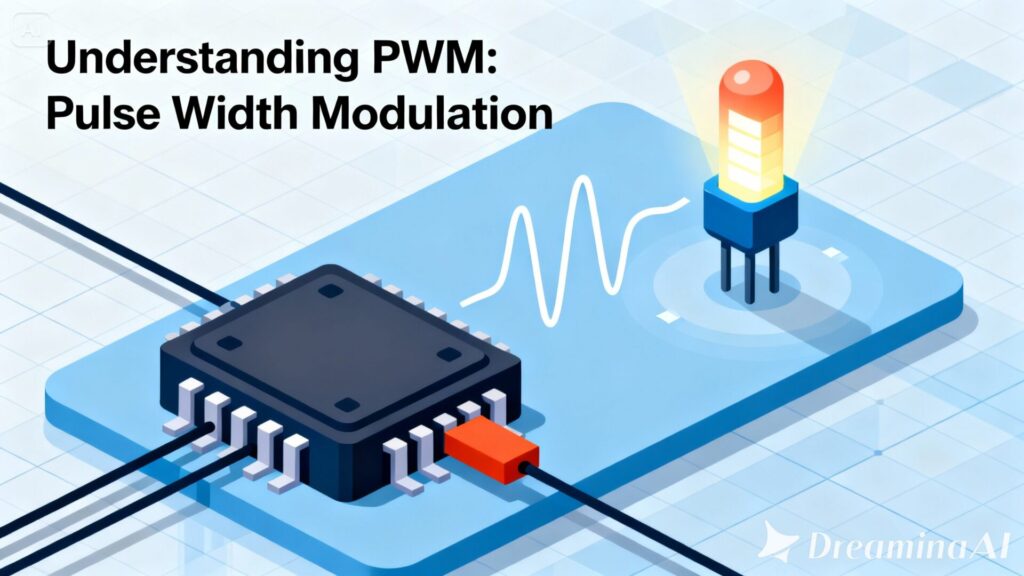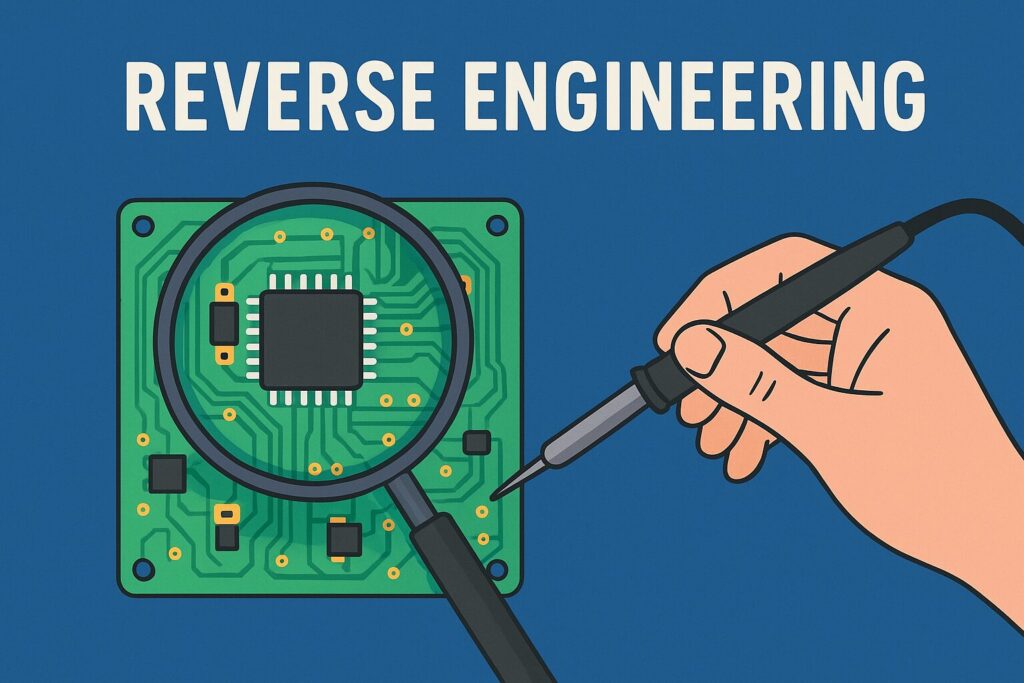Understanding PWM
In electronics and automation, you often come across the term PWM, which stands for Pulse Width Modulation. PWM is a technique where electrical signals are switched on and off in a specific time pattern to control their effective power. Simply put, a PWM signal rapidly turns on and off so that the average output changes, without the need to actually vary the voltage or current. This creates the illusion of higher or lower voltage, even though the supply voltage remains constant.
PWM is widely used in both microcontrollers and power electronics. But how does it work exactly, and where is it applied?
How PWM Works
The core concept of PWM revolves around the duty cycle, which represents the proportion of time a signal is “on” during a cycle. It’s expressed as a percentage:
- 50% Duty Cycle: Signal is on half the time → medium power.
- 75% Duty Cycle: Signal is mostly on → more power.
- 25% Duty Cycle: Signal is mostly off → less power.
Example: Instead of powering an LED with 3 V directly, you could use a 5 V supply and control the brightness with PWM. The LED’s brightness changes smoothly because the average power is adjusted, not the voltage itself.
Since PWM switches extremely fast, the human eye—or the connected device—doesn’t perceive the on/off cycles directly. We only notice the effect: brightness, speed, or power changes.
Applications of PWM
PWM is extremely versatile, ranging from low-power hobby circuits to industrial systems. Common applications include:
LED Brightness Control
- PWM controls how long an LED is on in each cycle instead of limiting current.
- Benefits:
- More energy-efficient
- Smooth and precise brightness adjustment
- Used in modern lighting, car headlights, and display backlighting.
Motor Speed Control
- PWM is one of the simplest and most effective ways to control DC motor speed.
- High duty cycle → more energy → faster rotation
- Low duty cycle → less energy → slower rotation
- Found in industrial conveyors, toy cars, and PC fans.
Audio and Signal Generation
- PWM can generate sound by varying the frequency of pulses sent to a speaker or buzzer.
- Used for tones, alarms, and simple audio applications.
Power Supplies and Voltage Regulation
- In switching power supplies (SMPS), PWM maintains a stable output voltage.
- Examples: phone chargers, PC power supplies, solar inverters.
- PWM allows high efficiency by transferring energy only during the “on” phase.
Heating and Temperature Control
- PWM regulates the power of heating elements for precise temperature control.
- Applications: 3D printer beds, soldering stations, industrial ovens.
Communication
- Less common, but PWM can also encode information for transmission.
- Found in simple radio modules and infrared remote controls.
Conclusion
PWM is a simple yet highly effective technique widely used in electronics. By rapidly switching a signal on and off, it controls average power precisely and efficiently. This makes PWM ideal for applications like:
- LED dimming
- Motor control
- Power supplies
- Audio signals
- Heating and temperature regulation
Most modern microcontrollers feature multiple PWM outputs, making it indispensable in both hobby and industrial projects. Its versatility allows engineers and hobbyists to achieve precise control over devices without the need for complex analog circuitry. Additionally, PWM contributes significantly to energy efficiency, reducing power waste in lighting, motors, and heating systems. As technology advances, the importance of PWM continues to grow, particularly in areas where accuracy, performance, and sustainable energy use are critical. PWM doesn’t just switch devices on or off—it provides flexible, efficient, and precise control of electrical power. With modern technology, PWM is increasingly important wherever energy efficiency and precise regulation matter.
🔗 Get in touch with us :
Phone/WhatsApp: +41 76 212 8248
✉️ E-Mail: info@revantechnology.com
For detailed information about our services in electronics development & PCB design:
Revan Technology – Your partner for professional electronics and PCB development
Discover our recent work:
Revan Technology – Our Projects


